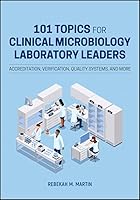
Understanding the Spread of Infectious Diseases
- Length: 261 pages
- Edition: 1
- Language: English
- Publisher: Nova Science Pub Inc
- Publication Date: 2021-02-12
- ISBN-10: 1536188921
- ISBN-13: 9781536188929
- Sales Rank: #0 (See Top 100 Books)
Outbreaks of infectious diseases-such as Ebola, Zika, and pandemic viruses-have raised concerns from Congress about how federal agencies use modeling to, among other things, predict disease distribution and potential impacts. Chapter 1 discusses emerging infectious diseases, in light of the recent coronavirus outbreak, and the modeling tools used to detect, predict, and understand the spread of such diseases. Chapter 2 examines the extent to which HHS used models to inform policy, planning, and resource allocation for public health decisions; the extent to which HHS coordinated modeling efforts; steps HHS generally takes to assess model development and performance; and the extent to which HHS has addressed challenges related to modeling.
Contents Preface Chapter 1 Coronaviruses: Understanding the Spread of Infectious Diseases and Mobilizing Innovative Solutions( Committee on Science, Space, and Technology, U.S. House of Representatives, Hearing Charter, Coronaviruses: Understanding the Spread of Infectious Diseases and Mobilizing Innovative Solutions Purpose Witnesses Key Questions Background Global Effects of COVID-19 COVID-19: A Rapidly Evolving Situation Using Technology to Detect, Predict, and Understand the Spread of Infectious Diseases Halting the Spread of Misinformation around Infectious Disease Outbreaks Investments in Research and Development to Prevent and Respond to Outbreaks Testimony of Suzan Murray, Program Director, Smithsonian Global Health Program, Smithsonian’s National Zoo and Conservation Biology Institute Smithsonian Institution, Written Testimony of Dr. Suzan Murray, DVM, DACZM, Director, Smithsonian Global Health Program, Smithsonian National Zoological Park and Conservation Biology Institute, Beyond Coronavirus: Understanding the Spread of Infectiou... Testimony of John Brownstein, Chief Innovation Officer, Boston Children’s Hospital and Professor, Harvard Medical School Written Testimony before the U.S. House of Representatives Committee on Science, Space and Technology, Hearing Entitled: “Beyond Coronaviruses: Understanding the Spread of Infectious Diseases and Mobilizing Innovative Solutions” Short Bio Testimony of Peter Hotez, Professor and Dean, National School of Tropical Medicine, Baylor College of Medicine, and Co-Director, Texas Children’s Hospital Center for Vaccine Development Testimony of Peter Hotez, MD, PhD; Professor and Dean, National School of Tropical Medicine, Baylor College of Medicine Co-Director, Texas Children’s Hospital for Vaccine Development, Texas Children’s Hospital Endowed Chair in Tropical Pediatrics, b... Beyond Coronaviruses: Understanding the Spread of Infectious Diseases and Mobilizing Innovative Solutions Testimony of Tara Kirk Sell, Senior Scholar, Johns Hopkins Center for Health Security, and Assistant Professor, Johns Hopkins Bloomberg School of Public Health United States House of Representatives, Committee on Science, Space, and Technology, Testimony of Tara Kirk Sell, PhD Senior Scholar, Center for Health Security, Johns Hopkins Bloomberg School of Public Health, March 5, 2020 Crowd Forecasting Using the Disease Prediction Platform Misinformation during Infectious Disease Outbreaks Supporting Research Recommendations Conclusion Biography for Tara Kirk Sell, PhD Appendix I: Answers to Post-Hearing Questions Responses by Dr. Suzan Murray Submitted by: Representative Bill Foster (IL-11) Submitted by: Representative Paul Tonka (NY-20) Submitted by: Representative Troy Balderson (OH-12) Responses by Dr. John Brownstein Submitted by Representative Ami Bera (CA-07) On the Technology On the Implementation Submitted by Representative Bill Foster (IL-11) Submitted by: Representative Jerry McNerney (CA-09) Submitted by Representative Haley Stevens (MI-11) Submitted by Representative Troy Balderson (OH-12) Responses by Dr. Peter Hotez Responses by Dr. Tara Kirk Sell Appendix II: Additional Material for the Record The Coronavirus Crisis: Fake Facts Are Flying About Coronavirus. Now There's A Plan To Debunk Them Updated on March 9th at Noon EST The Coronavirus Outbreak What You Should Know More Stories from NPR The Washington Post: Coronavirus Rumors and Chaos in Alabama Point to Big Problems as U.S. Seeks to Contain Virus Fears of the COVID-19 Coronavirus Provide More Opportunity for Misinformation About ‘Miracle Cures’ Argonne National Laboratory Chapter 2 Infectious Disease Modeling: Opportunities to Improve Coordination and Ensure Reproducibility( Abbreviations Why GAO Did This Study What GAO Recommends What GAO Found Background Public Health Agency Roles in Infectious Disease Outbreaks and Response Infectious Disease Outbreaks Ebola Zika Pandemic Influenza Infectious Disease Models HHS Has Used Infectious Disease Models to Help Inform Policy and Planning Use of Models to Inform Planning and Policy Decisions Use of Models to Inform Resource Allocation Decisions Agencies Coordinate Infectious Disease Modeling Efforts but Do Not Fully Monitor, Evaluate, and Report on Coordination HHS Agencies Coordinate Infectious Disease Modeling Efforts in Multiple Ways HHS Agencies Do Not Fully Monitor, Evaluate, and Report on Coordination Efforts CDC and ASPR Generally Followed Identified Practices for Infectious Disease Modeling, but CDC Has Not Fully Ensured Model Reproducibility CDC and ASPR Generally Followed Identified Modeling Practices but Did Not Always Fully Assess Model Performance Communication between Modeler and Decision Maker Description of the Model Verification Validation Agency Modelers Follow a Variety of Approaches to Modeling CDC Has Not Fully Implemented a Policy to Ensure Model Reproducibility Modelers Faced Several Challenges and Have Worked to Address Them Data Challenges ResourceRelated Challenges Communication Challenges Conclusion Recommendations for Executive Action Agency Comments and Our Evaluation Appendix I: Objectives, Scope, and Methodology HHS Use of Models to Inform Policy, Planning, and Resource Allocation Decisions HHS Coordination of Modeling Efforts Developing Infectious Disease Models and Assessing Their Performance Challenges to Effective Modeling Appendix II: Bibliography of Selected Model Publications Reviewed Ebola Models Zika Models Influenza Models Appendix III: Ten Selected Infectious Disease Models and Questions from Data Collection Instrument Data Collection Instrument GAO Review of Model Assessment Steps for Selected Agency Models Purpose Instructions Assessment Element Clarify Objectives Model Description Model Verification (Internal Validation, Internal Consistency, Technical Validity) Model Validation Communication Assessment Steps Question Appendix IV: Comments from the Department of Health and Human Services Appendix V: Accessible Data Data Tables Index Blank Page Blank Page
1. Disable the AdBlock plugin. Otherwise, you may not get any links.
2. Solve the CAPTCHA.
3. Click download link.
4. Lead to download server to download.





